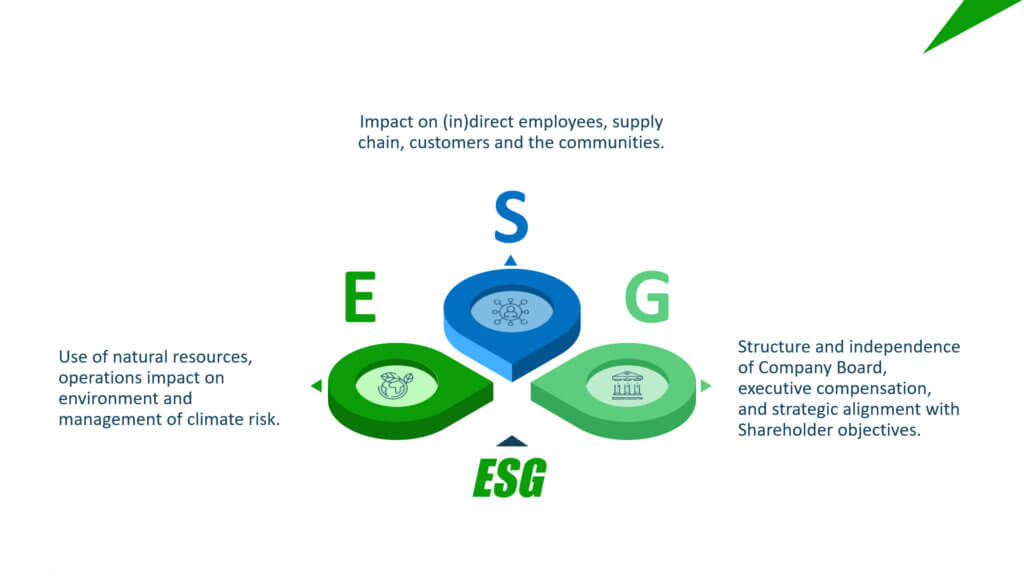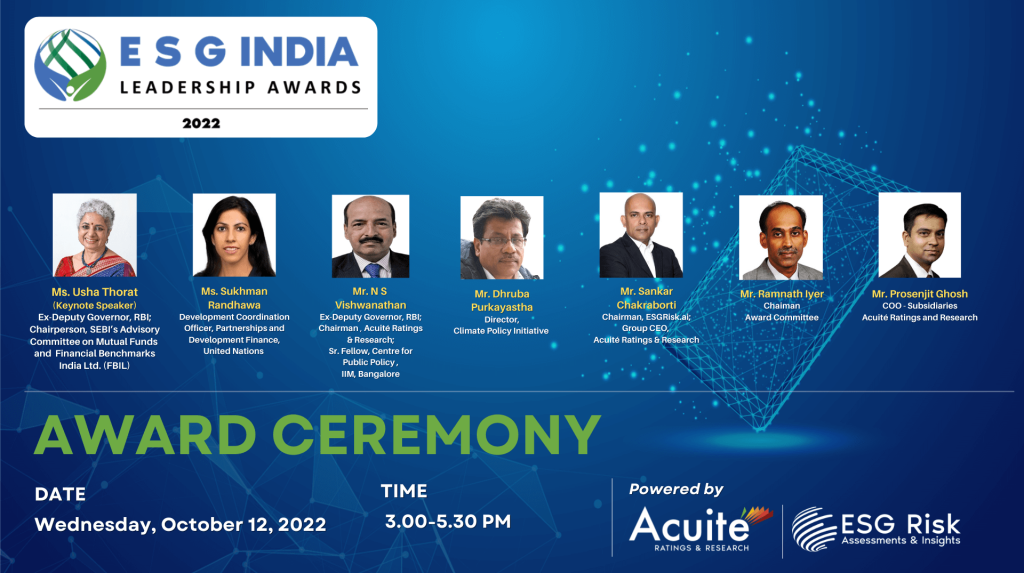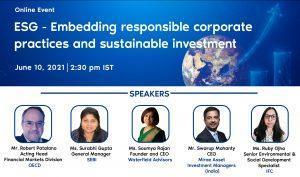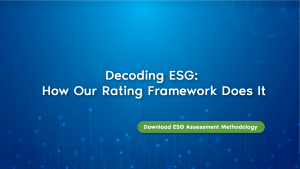How ESG strategy can accelerate ESG agenda
Odisha is a hive of artistic activity, teeming with terracotta crafts, brass work, sand designs and hands skilled in making lip-smacking rosogollas. An episode in 2005 unleashed the other side of the otherwise affable people of this state.
A South Korean steel-making company signed an MOU with Odisha to set up a 12 million tonne per annum plant along Paradip, a seaport city. The project, worth Rs 52,000 crore, was touted as India’s largest-ever FDI venture. What followed instead was a longstanding feud between Odisha’s state government and protestors from villages around that went on for 12 years before the steel company decided to withdraw.
This project is cited prominently in Environmental, Social, and Governance (ESG) case studies.
It’s a reminder that legal clearances and a warm handshake with the government alone do not make a business proposition viable especially in today’s ESG-conscious world. Environmental and social considerations have become key components in assessing the feasibility of any project.
Back to the Paradip episode. Thousands of trees had to be felled and scores of betel vineyards were destroyed for land acquisition. Threat to the environment affected the company’s competitive positioning too.
From a social perspective, this project promised to create jobs and aid development in Odisha. But villagers feared the steel plant would eat into the betel-based economy that sustained gram panchayats: Gadakujanga, Dhinkia and Nuagaon.
It must be mentioned here that the South Korean company has an impeccable ESG record. It’s the first steelmaker to issue sustainability bonds and is acclaimed for sound governance practices too, the third component of ESG.
Maybe, the organisation would not have made a huge investment decision without considering the non-financial and sustainability-based parameters in the present scenario where ESG is evolving by the day. Were the company to set up a steel plant in Odisha today, it may have had a formal ESG strategy in place, which is now a critical component in ethical investing.
What is ESG strategy?
Plainly put, a sound ESG strategy is a methodical evaluation to ensure how businesses can follow the principles of sustainability. Investors’ focus has shifted from ‘how much profit’ to ‘what is the source of profit?’. The demography between stakeholders and corporate houses has long changed. Investors want answers. Is your business model in sync with the needs of the society? Are you engaging enough with your stakeholders? What’s the impact of your business on the world?
Both individual and institutional investors formulate their investment strategies accordingly. Investors believe the three distinct factors – E, S and G – impact the health of a company, generate competitive returns, and reduce portfolio risk. According to a report by a business daily, 80 per cent of institutional investors intend to integrate ESG with their decision-making process.
The report cites data from United Nations’ Principles for Responsible Investment (UNPRI) as claiming that investment in non-ESG companies could bear up to 28 per cent more risk each year than that of investment in ESG-focused companies in the same sector. Furthermore, it adds that considering the superior returns and lower volatility of ESG stocks, retail investors are drawn to them as well.
Corporates are responding by being attentive to their role within the communities in which they operate. Unicorns, family-owned businesses and large corporate houses too believe that initiating ESG strategies can create long-term financial returns and have positive environmental and social impact.
How corporates benefit from ESG strategies
A strong ESG strategy enhances brand reputation, contributes to the company’s top-line growth, drives customer engagement, and helps retain the best talents in the industry.
A strong ESG strategy positively affects ROI besides reducing revenue risks. Market analysts aver that ESG strategies optimise companies’ capital expenditure, enhance return on investment, and minimise shipwrecked projects with sustainability issues.
How corporates can implement ESG strategies
Analysts believe having a strong materiality assessment – commonly called Materiality Matrix – is essential to identify the potential ESG issues a company could face. Such an approach allows corporates to take stock of their ESG maturity and consult experts on areas that need to be fixed. For example, the Materiality Matrix can give a company a better understanding of how to report its inclusion programmes and diversity metrics to an external audience. Output of a well-executed material assessment should result in an appropriate ESG action.
Corporate ESG Perspective

Access to comprehensive ESG data providers is the key here. For instance, an organisation like ESG Risk AI, India’s first ESG rating agency, offers services on how innovations could be embedded into a company’s strategy and how this strategy translates into superior sustainability performance, which is measured by achievement of numerical targets.
How ESGRisk.ai can help with ESG strategy
Through ESGRisk.ai, companies can evaluate their environment-management practices, relationship with employers, and health and safety measures. Outcomes of ESG strategies are evident through reductions in emissions, reduction in waste or better use of water, all of which appeal to environmental investors. Many organisations make most of ESGRisk.ai’s expertise to do assessments on appropriate internal controls, shareholder rights (measured by their ability to vote on important issues), and board independence.
If the results align with the targets a company has set for itself, the ESG strategy can be deemed effective.
The heartening sign is some of India Inc.’s top 1,000 companies are using ESG strategies to deliver, quantify, and report their ESG performances.
Why ESG strategy is important for the top 1000 companies listed in India?
Through comprehensive ESG strategies, these organisations have been able to measure the impact of their activities, achieve objectives like decarbonisation, set sustainability targets, analyse gaps, and report progress. Sustainability analysts point to how such practices create new consumers, attract fresh talent, reduce business cost, and open different sources of revenue.
These firms have laid a template of what sound sustainable investment strategies can achieve. Mahindra & Mahindra is giving its electric mobility business a firm push with a planned investment of over $600 million. Dalmia Cement has one of the lowest carbon footprints in the cement world globally. JSW is cutting pollution from truck transportation through a pipe conveyor belt to transport 36 MT of iron ore every year. That’s not all.
Recent reports claim that nine Indian companies, as part of their dynamic ESG planning, collectively issued green bonds to mobilise $2.33 billion. Global demand for these bonds has already crossed $1 trillion during FY21. It’s estimated that India can achieve a target of $5 trillion economy by 2025 if the corporate world embraces ESG.
Conclusion
ESG strategy, it’s rightly said, is not a one-time assessment but a living, breathing policy that has to be nurtured over the years. Constant updating and reviewing of ESG strategy ensure that organisations are aligned with stakeholders’ expectations. Firms that successfully implement ESG policies gain advantage over their peers. Businesses that focus on ESG strategies are headed in the right direction to achieve net-zero goals in compliance with the 2050 targets. They do so without forsaking profits and continue to have access to finance through capital markets and banks. It’s in their interests to create a sustainable corporate world.







